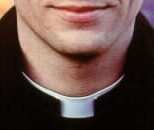What happens when a pope dies: The destruction of the papal ring and the sealing of the papal apartments (part 3)
The manner in which the pope's ring, called the Fisherman's ring, is destroyed is decided upon by the General Congregation of cardinals. They also decide if this ceremonial is to be made public or not. Traditionally it has not been, in which case only the members of the papal household and the cardinals get to witness this. The actual task of destroying the ring is carried out by the cardinals, specifically by the cardinal chamberlain. This is an important event as it symbolically and ceremoniously ends the power vested on the dead pope.
So, the cardinals and the members of the papal household accompanied by the commandant of the Swiss Guards enter the pope's apartments. The ring is inspected by the cardinals present to verify if it is truly the pope's ring. Then the cardinal chamberlain with a silver knife in hand scratches the seal twice, once horizontally and once vertically, in the sign of the cross. This sign effectively defaces the seal. Those present inspect the ring again.
The defaced ring is then placed on a lead block. With a silver mallet, the cardinal chamberlain then administers a blow to the ring. He continues to do so until the ring is finally destroyed. The pieces of the ring are then placed in a velvet sack and tied tightly. This sack along with the other important documents of the deceased pope will later be placed in one of the pope's coffins.
Then the cardinal chamberlain takes custody of, and seals up the papal properties, including his private apartments and his summer residence at Castel Gandolfo. The entrance to the properties is sealed ceremoniously. Each entrance is locked, from within and from the outside. At the papal apartments in the Vatican, a red silk ribbon is placed across the threshold in two parts, forming an X. In the center, at the juncture point, the four-inch-wide seal of the cardinal chamberlain assures that the apartments are closed. A Swiss guard remains outside throughout the sede vacante.
All phones, faxes, and other means of communications are cut. The curtains are drawn and the desk and files all locked. No one may enter the dead pope's apartments, even his secretary, until a new pope is elected.
[Next, part 4 on the novendiales and the burial]
So, the cardinals and the members of the papal household accompanied by the commandant of the Swiss Guards enter the pope's apartments. The ring is inspected by the cardinals present to verify if it is truly the pope's ring. Then the cardinal chamberlain with a silver knife in hand scratches the seal twice, once horizontally and once vertically, in the sign of the cross. This sign effectively defaces the seal. Those present inspect the ring again.
The defaced ring is then placed on a lead block. With a silver mallet, the cardinal chamberlain then administers a blow to the ring. He continues to do so until the ring is finally destroyed. The pieces of the ring are then placed in a velvet sack and tied tightly. This sack along with the other important documents of the deceased pope will later be placed in one of the pope's coffins.
Then the cardinal chamberlain takes custody of, and seals up the papal properties, including his private apartments and his summer residence at Castel Gandolfo. The entrance to the properties is sealed ceremoniously. Each entrance is locked, from within and from the outside. At the papal apartments in the Vatican, a red silk ribbon is placed across the threshold in two parts, forming an X. In the center, at the juncture point, the four-inch-wide seal of the cardinal chamberlain assures that the apartments are closed. A Swiss guard remains outside throughout the sede vacante.
All phones, faxes, and other means of communications are cut. The curtains are drawn and the desk and files all locked. No one may enter the dead pope's apartments, even his secretary, until a new pope is elected.
[Next, part 4 on the novendiales and the burial]




<< Home